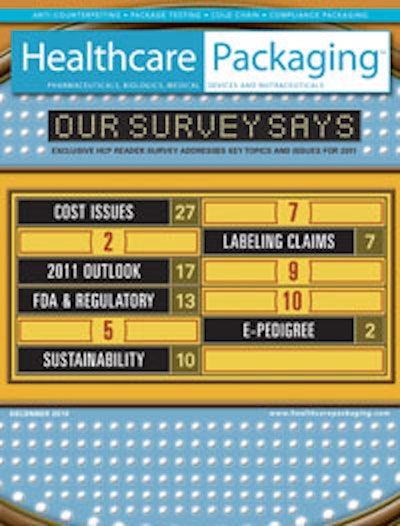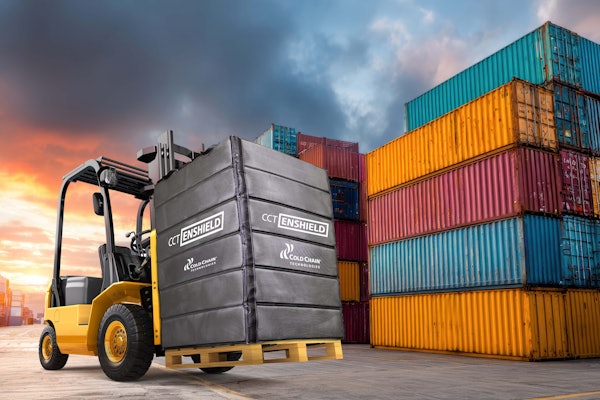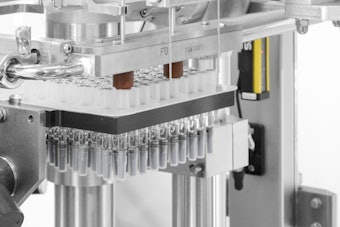
the regulatory environment, health claims, and compliance-prompting packaging.
A new year is almost here, and as the economy moves beyond deep recession, the outlook for 2011 is neither overtly pessimistic nor optimistic. Instead, there's a sense of caution. That interpretation is based on more than 200 packaging professionals' responses to a September e-mail survey of Healthcare Packaging readers.
About 22% of the 2011 Healthcare Packaging Trends Survey respondents were from pharmaceutical firms, 21% from medical device companies, 17% from packaging materials suppliers, 10% from packaging equipment vendors, and 8% from design and consulting firms, with respondent titles varying widely. The balance of respondents work for personal care product makers and from biologics/biopharmaceutical and nutraceutical companies.
The goal of the survey was not to calculate percentages based on multiple-choice responses, but to seek verbatim responses to many of the key issues facing packagers in the pharmaceutical, medical device, biologics, and nutraceutical industries. What follows are several of the more thoughtful responses to the survey questions.
The economy, hiring, and firing
The survey asked, “How's the economic outlook for 2011? Are you hiring? Planning more layoffs? Do you see a pickup or continued slowdown?”
“We are not laying off. At the same time, we are not hiring aggressively, either. We are seeing a pickup, and the projects are coming along well,” said a pharmaceutical respondent.
“The healthcare packaging division of our company is not adding new positions at this time. However, we are continuing to replace any vacated positions,” noted a respondent from a medical device manufacturer.
“We are attempting to maintain our employee base. We do not see a significant increase in sales that would warrant widespread hiring. However, we are selectively hiring as the 'pool' has increased in value versus skill level (i.e., we are able to hire good skill levels for a reasonable price),” according to a personal care products respondent.
“We are reducing cost and keeping a keen edge on our pricing,” noted a medical device respondent.
“The economic outlook seems good. As business increases, the possibility of hiring people can be explored,” said a respondent with a pharmaceutical company.
“Our company went through a 20-percent layoff in 2010, the first layoff in the history of the company. The company is starting to hire new employees, but the future growth is dependent on acquiring new compounds that can gain FDA approval,” explained a pharmaceutical company respondent.
“Right now the company is doing well, but that doesn't mean that people are not worried for their jobs,” noted another respondent with a pharmaceutical firm.
“We are very hire-hesitant. When a position needs to be filled, we will hire if we don't have the skill sets in-house,” said a representative of a pharmaceutical company.
“No hiring in the near future, and maybe more layoffs. Business has slowed down,” was the perspective of this medical device company respondent.
What's your company's top priority for 2011?
Not surprisingly, cost issues and sustainability ranked highest among survey respondents. Regulatory matters, packaging line efficiency, and multilingual labeling were also noted as pressing issues for 2011.
“Cost savings is a huge issue right now,” said a pharmaceutical respondent. “With the company budget-crunching, they are looking to packaging to reduce costs, and that burden falls directly on our department as packaging engineers.”
A respondent from a medical device firm said that “seeking financially viable sustainability
initiatives, including going to PVC-free packaging,” was a corporate priority.
Other 2011 priorities mentioned by survey respondents included staffing personnel with “'A' players who have the right skill sets,” challenges related to unique device identification, multilingual labeling that doesn't compromise package validation, and issues related to small-volume runs.
The regulatory environment
”Describe your take on the current 'revitalized' FDA and regulatory environment as it relates to your packaging operations,” was another survey question. A large share of this question's respondents came from the medical device arena, where one person believed the “FDA appears to have an adversarial stance again.”
Taking a more promising position was another medical device respondent who said, “Love it—much more cooperation that allows us to be prepared with the information wanted.” The respondent did add that the company encountered “a bit more problems with filings required for items that used to be end-of-year changes.”
A personal care respondent wrote, “We expect government regulation to stay the same or increase a little. The government does not want to be perceived as slowing down growth through increased 'red tape.'”
Several respondents offered more specific details pertaining to the impact of FDA and regulatory matters. “My expectation is that the FDA and regulatory environment will focus on the validation aspect of the packaging process, which will encourage many manufacturers to step up and improve their quality systems,” said a medical device respondent.
A pharmaceutical respondent noted, “They are clamping down and putting a significant emphasis on packaging. We have spent quite a lot of effort in the last year ensuring that our processes and procedures are sound and defendable.”
As is often the case, the potential for increased regulations is causing concern. “At this point [there's] no direct impact, but they are beginning to take more interest in the packaging and labeling,” said a medical device person. Another medical device respondent said it “could add additional regulatory work to an already overburdened system.”
One more medical device maker pointed to the bottom line as it related to potential costs to create unique package identification. “Changes like [this], while necessary, will require significant resources to implement.”
How do you view pharmaceutical/nutraceutical health claims?
Pharmaceutical and nutritional supplement/functional foods communities seem to be at odds regarding health-related claims. Answering this survey question, a pharmaceutical respondent said, “Pharmaceutical and nutritional supplements are manufactured for human beings. In all aspects, the utmost care and compliance of strict procedures must be followed.”
Some respondents feel the playing field has not been equal, as this pharmacy pro said: “I believe that nutritional supplements should be held to the same standards as pharmaceuticals.”
“Better controls are needed in the nutraceutical arena,” suggested a pharmaceutical respondent. “Of concern are the health risks associated with tainted raw materials sourced from outside the U.S. Drug/nonpharmaceutical interactions are also of concern.”
A medical device respondent added, “Too many nutritional supplements had no basis in the claims made. Consumers had difficulties understanding the differences in the two areas.”
Will healthcare reform drive compliance packaging?
Healthcare reform seems to be moving toward rewarding medical professionals for patient outcomes. Could that lead to greater use of compliance-prompting packaging?
“I can see the more expensive compliance packaging in terms of cold chain products packed in the two- to eight-degree Celsius range,” noted a pharmaceutical respondent.
Greater use of compliance-prompting packaging “is totally dependent on the level of oversight and enforcement applied to the segments of the chain below the manufacturer,” noted a representative from a specialty pharmacy.
A medical device respondent suggested, “This could impact the sterility and package integrity of medical packaging.”
A pharmaceutical professional said, “Compliance is the key in clinical studies, and since these studies are the basis for drug approval, our customers are usually willing to pay more for compliance packaging features if they are crucial to the particular study. There is still no way to prove the patient is consuming the medication short of witnessing the act.”
“Giving the patients the best should always be the top priority,” believed a medical device manufacturer.
“This is an excellent outcome of the bill, however, [there is] very little impact on us,” said a personal care company respondent.
And finally, this viewpoint from a pharmaceutical respondent: “Our company has not discussed the potential impact that healthcare reform may have on our packaging operations. We are not looking to being ahead of the curve by implementing compliance packaging immediately. [There are] still too many unknowns.”






















